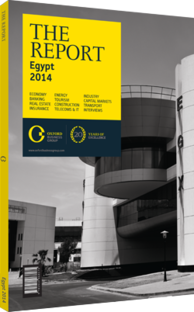Suez may be looking to bulk food shipments to East Asia
The race for competitiveness and predominance in providing sea routes for the global container business is costing the operators of the Suez and Panama Canals billions of dollars to upgrade their services and facilities. In the case of Suez, broadening the waterway will increase the number of ships that can navigate the canal simultaneously to 97 (see Construction chapter).
Mathematics
For ship operators the size of vessel is a crucial factor, as is the speed of transit. Unlike its Central American rival, the 163-km Suez Canal can already accommodate all but the very largest ships in the world and new two-way traffic lanes will cut the end-to-end trip from 18 hours to 11 hours. At present, 8-10% of global sea trade passes through it. Suez has been gaining traffic from the Panama Canal for the past few years. In 2012, roughly two-thirds of container traffic used the Panama Canal. By October 2013, its share had dropped to 58% and, according to estimates by Drewry shipping consultants, the split is now 52%:48% in favour of Suez. According to a report from Denmark-based SeaIntel Maritime Analysis, to keep container carrier services from south China and South-east Asia to the US East Coast (USEC) and regain those it had lost to the Suez Canal, the Panama Canal would need to develop a new pricing structure. SeaIntel compared the cost of shipping a twenty-foot equivalent unit (TEU) from various ports in China and South-east Asia to Houston and USEC ports. Suez was cheaper for almost all routes and vessel sizes because carriers can use larger and more fuel-efficient ships. However, when the Panama Canal’s own expansion is complete, probably sometime in 2016, the capacity to transit carriers with up to 13,000 TEUs will change the mathematics. It will be “significantly cheaper”, said SeaIntel, to use Panama rather than Suez from Shanghai in north China to USEC ports, even though Suez fees are lower. However, Suez will keep its cost advantage from Yantian in south China to New York, an advantage that grows as the vessel size rises. The Panama Canal Authority said it intends to remain competitive in terms of pricing compared to other routes, including the Suez Canal and sending containers by rail from US West Coast ports to the East Coast. Even though the Suez route from south China and South-east Asia to USEC is cheaper than the Central American alternative, Panama retained 12 of the 20 Asia-USEC services. Apart from a transit time from Shanghai to New York that is two days shorter, another reason is that half the services using this route to deliver cargo to the Caribbean, Central America and South America’s west coast make trans-shipment calls in Panama, Jamaica or Mexico.
Trade Expansion
Egypt is also looking to the intended expansion of trade and economic cooperation of the BRICS countries – Brazil, Russia, India, China and South Africa – with Europe and North America. China and Asia need to increase imports of food, especially grains and meat. One clear source is the East European countries that historically were breadbaskets of the world but have not recovered their full potential since the collapse of the Soviet Union 25 years ago. The route for those exports from the Black Sea will be through the Suez Canal. And even the Asia-US container traffic via Suez may not be under as much threat from an enlarged Panama Canal as some thought. Some manufacturing is moving out of China given rising labour costs to other parts of Asia – all closer to the Suez route.
You have reached the limit of premium articles you can view for free.
Choose from the options below to purchase print or digital editions of our Reports. You can also purchase a website subscription giving you unlimited access to all of our Reports online for 12 months.
If you have already purchased this Report or have a website subscription, please login to continue.

